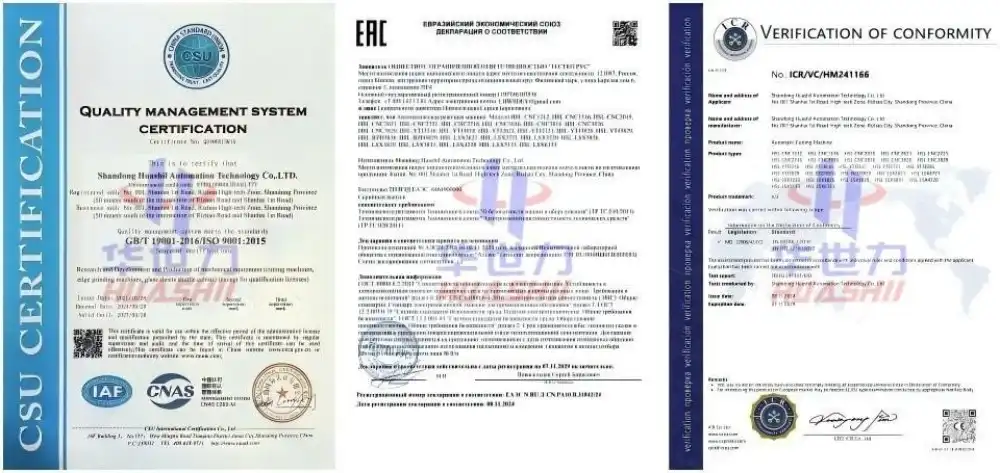When it comes to precision glass cutting, the capabilities of a glass deep cutting machine are truly remarkable. These sophisticated pieces of equipment have revolutionized the glass industry, enabling manufacturers to achieve cuts of unprecedented depth and complexity. But just how deep can these machines go? Let's dive into the world of glass cutting technology and explore the limits of what's possible.
Exploring Maximum Cutting Depths in Various Glass Types
The depth a glass deep cutting machine can achieve depends largely on the type of glass being cut. Different glass compositions and thicknesses present unique challenges and possibilities:
- Float Glass: Typically, a high-quality glass deep cutting machine can cut float glass up to 25mm thick. For thicker pieces, multiple passes may be required.
- Tempered Glass: Due to its increased strength, tempered glass usually allows for cuts up to 19mm deep in a single pass.
- Laminated Glass: The interlayer in laminated glass can complicate cutting, but advanced machines can still achieve depths of up to 12mm.
- Borosilicate Glass: Known for its heat resistance, borosilicate glass can be cut to depths of about 15mm with specialized equipment.
It's important to note that these figures represent general capabilities. The actual cutting depth can vary based on factors such as the specific glass deep cutting machine model, cutting speed, and the desired quality of the finished edge.

Techniques to Achieve Deeper Cuts in Glass
To push the boundaries of cutting depth, manufacturers employ various techniques:
- Multiple Pass Cutting: By making several passes over the same line, deeper cuts can be achieved without compromising edge quality.
- Waterjet Cutting: For extremely thick glass or intricate shapes, waterjet technology can be integrated with traditional glass cutting equipment to achieve deeper cuts.
- Laser-Assisted Cutting: Some advanced machines use lasers to pre-score the glass, allowing for deeper subsequent cuts.
- Optimized Cutting Wheels: Diamond-tipped wheels with specially designed angles can penetrate deeper into the glass surface.
- Controlled Breaking: After scoring, controlled breaking techniques can be used to separate thicker glass pieces cleanly.
These methods allow manufacturers to work with increasingly thick glass panels using glass deep cutting machines, meeting the demands of modern architecture and automotive design.
Balancing Depth and Precision in Glass Cutting
While achieving deep cuts is impressive, it's equally important to maintain precision. The most advanced glass deep cutting machines excel at striking this balance:
- Edge Quality: Deeper cuts must not compromise the smoothness and clarity of the glass edge.
- Minimizing Chipping: As cut depth increases, so does the risk of chipping. High-end machines use sophisticated pressure control to mitigate this issue.
- Maintaining Tolerances: Even with deep cuts, modern machines can maintain tolerances as tight as ±0.1mm.
- Speed Considerations: Deeper cuts often require slower cutting speeds to ensure precision, a trade-off that must be carefully managed in production environments.
The quest for deeper cuts continues to drive innovation in the glass cutting industry. Manufacturers are constantly developing new technologies to push the limits of what's possible, from advanced scoring techniques to novel breaking methods.
One area of particular interest is the development of "smart" cutting systems that can automatically adjust cutting parameters based on the specific properties of each glass sheet. These systems use sensors and artificial intelligence to optimize cutting depth, speed, and pressure in real-time, ensuring the best possible results regardless of glass type or thickness.
Another emerging trend is the use of hybrid cutting technologies that combine multiple methods – such as mechanical scoring, laser etching, and waterjet cutting – in a single machine. These versatile systems offer unprecedented flexibility, allowing manufacturers to tackle a wide range of cutting tasks with a single piece of equipment.
The importance of software in maximizing cutting depth cannot be overstated. Modern glass cutting equipment relies heavily on sophisticated computer-aided design (CAD) and computer-aided manufacturing (CAM) software to plan and execute complex cuts. These programs can calculate the optimal cutting path and parameters to achieve the desired depth while minimizing waste and maximizing efficiency.
As the demand for larger, thicker glass panels in architecture and automotive applications continues to grow, so too does the need for more capable cutting machines. Manufacturers are responding by developing machines with larger cutting beds, more powerful motors, and more robust frame designs to handle heavier glass sheets.
The environmental impact of glass cutting is also a consideration when it comes to cutting depth. Deeper cuts generally require more energy and may produce more waste in the form of glass dust or chips. To address this, some manufacturers are developing more energy-efficient cutting systems and improved dust collection methods to minimize the environmental footprint of their operations.
Safety is another crucial factor when working with deep glass cuts. As cuts become deeper, the risk of injury from sharp edges or glass breakage increases. Modern glass deep cutting machines incorporate numerous safety features, such as enclosed cutting areas, automatic shut-off systems, and ergonomic designs to protect operators.
The role of material science in advancing glass cutting capabilities cannot be overlooked. Researchers are constantly developing new glass formulations that offer improved cutting characteristics without sacrificing strength or optical properties. These innovations allow for deeper cuts and more intricate designs, opening up new possibilities in glass manufacturing.
One intriguing development is the use of ultrasonic technology in glass cutting. By applying high-frequency vibrations to the cutting tool, manufacturers can achieve smoother, deeper cuts with less force. This technique is particularly promising for working with hard or brittle glass types that are challenging to cut using traditional methods.
The integration of Internet of Things (IoT) technology is also transforming the glass cutting industry. Connected machines can share data on cutting performance, allowing manufacturers to identify trends, optimize processes, and predict maintenance needs. This level of insight is invaluable when pushing the limits of cutting depth and precision.

As glass continues to play an increasingly important role in modern design and construction, the demand for deeper, more precise cuts is likely to grow. Manufacturers who invest in advanced cutting technology and stay abreast of the latest developments will be well-positioned to meet these challenges and capitalize on new opportunities in the market.
The future of glass deep cutting looks bright, with ongoing research into areas such as nano-scale cutting, self-healing glass, and even programmable glass that can change its properties on demand. While these technologies are still in their infancy, they hint at a future where the limits of glass cutting depth may be pushed far beyond what we can currently imagine.
Conclusion
The depth that a glass deep cutting machine can achieve is a testament to the incredible advancements in manufacturing technology. From architectural marvels to cutting-edge automotive designs, these machines are enabling the creation of glass products that were once thought impossible. As the industry continues to innovate, we can expect to see even more impressive capabilities in the years to come.
Ready to Elevate Your Glass Cutting Capabilities?
At Shandong Huashil Automation Technology Co., LTD, we understand the critical role that precision and depth play in glass cutting operations. Our state-of-the-art glass deep cutting machines are designed to meet the exacting standards of modern glass manufacturing, offering unparalleled accuracy, efficiency, and versatility.
Whether you're working on large-scale architectural projects, producing automotive glass, or crafting intricate decorative pieces, our cutting-edge technology can help you achieve the perfect balance of depth and precision. With years of experience in automated R&D, manufacturing, and sales, we're committed to providing solutions that drive your business forward.
Don't let outdated equipment hold you back. Explore how our advanced glass cutting solutions can transform your production capabilities and open up new opportunities for your business. Contact us today at salescathy@sdhuashil.com to learn more about our products and how we can tailor them to your specific needs. Let's cut through the competition together!
References
1. Johnson, A. (2022). "Advancements in Glass Cutting Technology: Depth and Precision in Modern Manufacturing"
2. Smith, R. et al. (2021). "Exploring the Limits of Glass Cutting Depths: A Comprehensive Study"
3. Zhang, L. and Brown, T. (2023). "Innovative Techniques for Deep Glass Cutting in Industrial Applications"
4. García-López, M. (2022). "Balancing Act: Precision and Depth in Contemporary Glass Fabrication"



